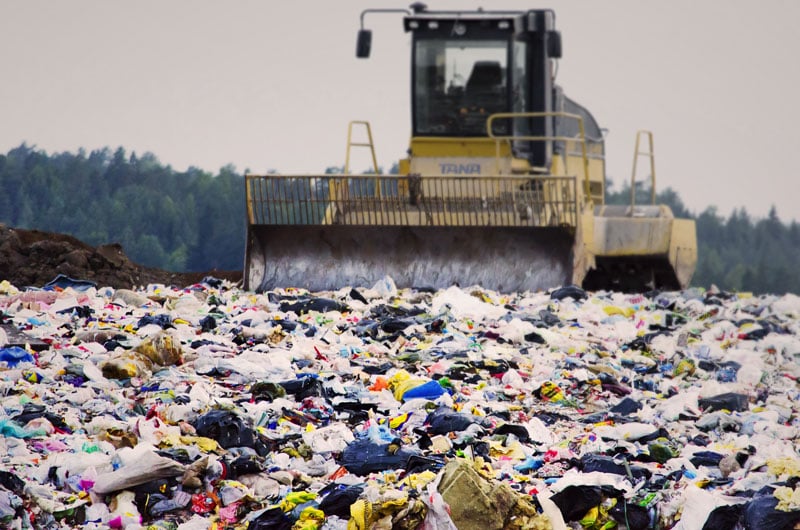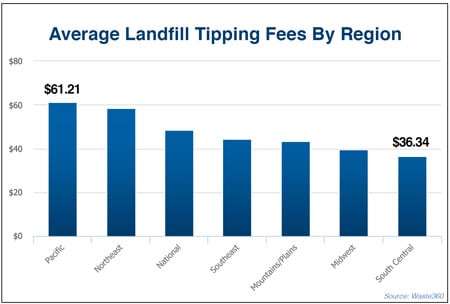
Bigger is not always better, especially when it comes to landfills. But with the average American producing more than four pounds of trash each day, we are forcing waste management companies to expand the already giant swaths of land that our garbage calls home.
A whopping 167 million tons of waste enters landfills annually in the United States. Relying on these sites to handle our unwanted stuff is expensive, bad for the environment, and ultimately unsustainable.
Today there are around 700 landfills in the U.S., down from the 20,000 that used to be scattered across the country in the 1970s. The dwindling numbers do not reflect a decrease in trash output, however. Stricter environmental regulations obligated landfills to use more expensive systems and technologies (such as impervious liners to stop toxic waste from leaking into the soil and waterways). These regulations forced smaller landfills to close and larger ones to absorb a greater portion of our refuse.
These regulations have reduced some environmental harm, but landfills are still a burden on our planet's health. The smaller number of landfills has also added new problems to the mix, namely the effects of transporting our trash farther. Moving the waste of New York's Manhattan borough, for example, requires diesel trucks to drive 7.8 million miles to outlying landfills each year. This releases more than 29 million pounds of carbon into the air annually.

Besides these environmental liabilities, operating a landfill is costly. Depending on where you live, you could be paying a premium to keep your trash out of sight and out of mind. The Pacific region of the U.S. pays a landfill "tipping fee" of about $61 per ton, for example, compared to the national average of $48.
Running Out of Space
Even if we rationalized these negative consequences, landfilling is not a viable solution for long-term waste management. The three largest waste management companies in the U.S.—Waste Management, Allied Waste Industries, and Republic Services—report having from just 27 to 36 years of landfill life left, on average. Some states are already almost at capacity. Massachusetts and Rhode Island have just seven years until all of their landfill space runs out.
The solution of late has been to expand existing landfills. It's difficult to get land approved for new sites (who wants to live next to a heap of trash?), and it makes more economic sense to expand infrastructures already in place rather than create new ones. This is still a short-term solution, however. America needs to address the root of the problem: our immense quantity of waste. We produce 624,700 tons of trash each day, more than any other country on Earth. If we want to reduce the environmental and monetary costs of landfilling that waste, we need to think beyond the status quo.
Preventing Landfill Expansion
The most obvious solution is recycling. Although much of our trash can be recycled, 66 percent of it ends up in the waste bin. This is due in part to the fact that recycling is not always the most convenient way to get rid of waste. Studies show that people want to recycle, but will only do so if it is easy for them. This holds especially true for items that can't be put in the traditional blue bin, like old textiles. People are often surprised to hear that that old clothes can be recycled into things like furniture stuffing, home insulation, or even new garments, so it's no wonder that the recycling rate for textiles in the U.S. is a mere 15 percent. Planet Aid places its yellow bins at convenient sites to collect textiles, and there are plenty of similarly-charitable organizations that will recycle other items banned from the blue bin, like old electronics, batteries, eyeglasses, or books.
We should also be putting pressure on companies to manufacture their items so that they are more easily recycled in the first place. So much of our stuff is doomed for the landfill because it can't be easily repaired or is made of unrecyclable material. Creating products that work in a closed-loop system—one that ensures the product can be repurposed in some way—is crucial for environmental sustainability. Using eco-friendly packaging is another important step toward reducing the amount of waste that ends up in the landfill.
The average person can make a difference by recycling smarter and purchasing products that are kind to the environment. The smaller the landfill, the happier the planet.
